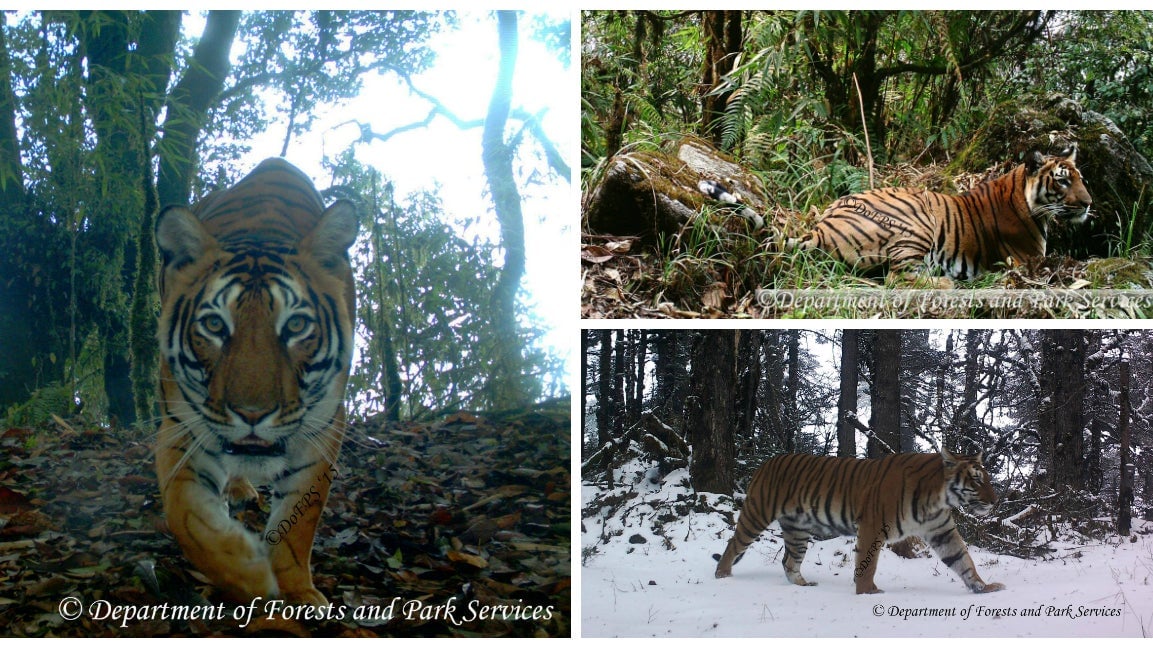This tiny Himalayan kingdom is teaching the world how to save the tigers
The world has a lesson to learn from Bhutan.


The world has a lesson to learn from Bhutan.
The small Himalayan kingdom is now home to 103 tigers, according to the country’s first-ever tiger survey that was released on Global Tiger Day on July 29. That’s significantly higher than an earlier estimate of 75 tigers in 1998—and even more than the tiger population in Bangladesh’s Sundarbans mangrove forests.
In Bhutan, several of these big cats are found in areas as much as 4,000 metres above sea level, making them the highest living tigers in the world, located up in the mountains that constitute much of the rugged territory of the Himalayan nation.
In 2010, the BBC captured the first video footage showing the high-alpine tigers living in the kingdom.
Bhutan, once one of the most isolated countries in the world, launched its first conservation programme focused on tigers in 1996. Then, in 2005, the government released a ten-year Tiger Action Plan dedicated to conserving its rare big cats, protecting their habitat, and raising awareness about the species across the country.
These tiger conservation efforts are in line with Bhutan’s overall philosophy. Looking after the environment actually ranks quite high on the kingdom’s list of priorities, with environmental conservation being one of the four pillars of the country’s Gross National Happiness Index, which it uses to measure prosperity.
In 1992, the country established the world’s first-ever environmental trust, the Bhutan Trust Fund for Environmental Conservation, with help from the United Nations Development Programme and the World Wildlife Fund. This trust started out with an endowment of $20 million to fund conservation efforts.
Over the years, Bhutan has established 10 protected areas, which cover about 29% of the total land area, and has designated an extra 9% for the construction of wildlife corridors to connect the protected areas and allow various species to thrive. On top of this, Bhutan’s constitution requires that the country preserve forest cover in 60% of its total land area to protect the habitats of rare species.
Given that habitat loss and poaching have eliminated 97% of the planet’s tiger population in the last century, the world clearly needs to learn from Bhutan.